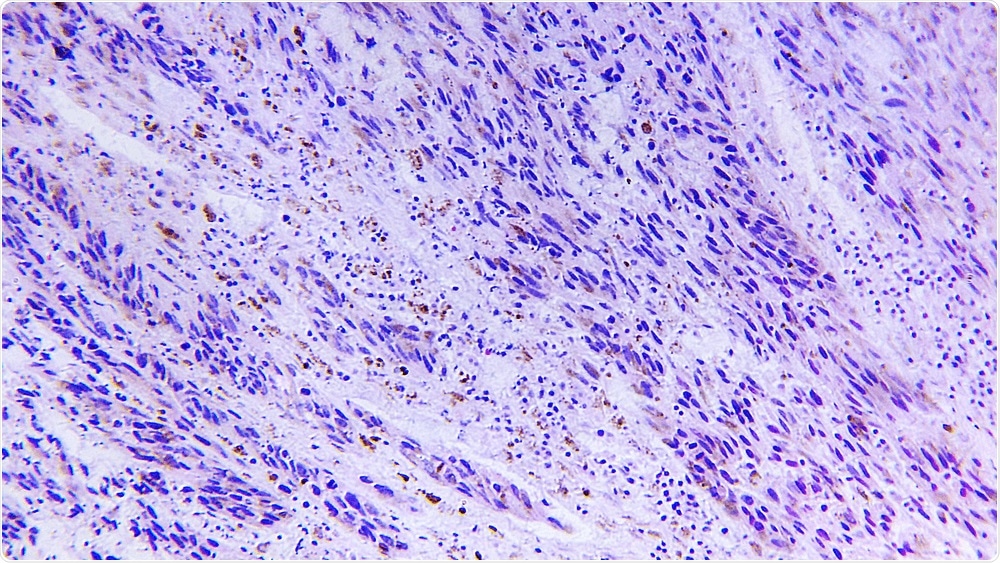The mechanical properties of the cellular microenvironment in the body are sensed and responded to by cells. Changes in these structures, which arise in a variety of human pathologies like cancer, can cause abnormal cell responses. It is unclear how cells respond to changes in the mechanical microenvironment.

Understanding more about the cellular microenvironment and how cell properties are impacted by disease could help clinicians develop more effective treatments. Image Credit: Getty Images.
A team of Texas A&M University researchers is focusing on an innovative way to explain cellular mechanosensing, the ability to sense and react to the mechanical properties of the microenvironment.
Tanmay Lele, a Unocal Professor in the Departments of Biomedical Engineering, Chemical Engineering, and Translational Medical Sciences at the University of Florida, collaborated with Charles Baer, an evolutionary biologist at the University of Florida.
They used experimental cellular evolution techniques to better understand cellular adaptation to biomaterials with regulated mechanical properties.
Purboja Purkayastha, a doctoral student in the Artie McFerrin Department of Chemical Engineering, and Kavya Pendyala, a technical laboratory coordinator in the Department of Biomedical Engineering at Texas A&M, led the tests.
Before our work, it was basically unknown if cells would evolve in controlled mechanical environments. We set out to test this possibility.”
Tanmay Lele, Unocal Professor, Departments of Biomedical Engineering, Chemical Engineering, and Translational Medical Sciences, University of Florida
Cells are the result of hundreds of millions of years of evolution, and their responses to environments—both mechanical and chemical—are most likely the result of natural selection.
Chemical restrictions are well understood to exert selective pressure on cell populations, but it has never been studied whether the mechanical properties of a cell’s environment constitute a major agent of natural selection.
In diverse mechanical conditions, certain forms of animal cells show “phenotypic plasticity,” which means they look and behave differently. There are two potential causes for cell plasticity in various mechanical settings.
First, the phenotypes could be optimum, in the sense that there is no better way for a cell to work in each environment. Alternatively, the plasticity could be a compromise such that the phenotypic characteristic is ideal in one mechanical context but suboptimal in another.
The team’s study showed that cellular mechanosensing is not optimal but rather a tradeoff. The team demonstrated that cells evolve under selection pressure from biomaterials with regulated mechanical stiffness using a mixture of genome sequencing, experimental cellular evolution on biomaterials of controlled stiffness, simulations, and gene expression study.
The findings of the team’s study were recently published in the journal Molecular Biology and Evolution. Experimenting with cell evolution, according to Lele, is a good way to better understand the processes behind cellular mechanosensing.
We are currently using experimental cellular evolution to understand how cancer cells, which have great genomic variation, respond to the altered mechanical stiffness and other mechanical properties of tumor microenvironments. Further, the fact that cells can be evolved on biomaterials of controlled properties in vitro opens up new ways to generate engineered cells with properties optimal for those properties.”
Tanmay Lele, Unocal Professor, Departments of Biomedical Engineering, Chemical Engineering, and Translational Medical Sciences, University of Florida
Source:
Journal reference:
Purkayastha, P., et al. (2021) Reverse Plasticity Underlies Rapid Evolution by Clonal Selection within Populations of Fibroblasts Propagated on a Novel Soft Substrate. Molecular Biology and Evolution. doi.org/10.1093/molbev/msab102.